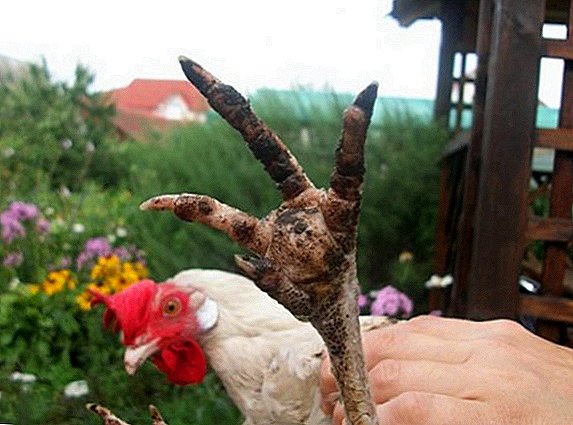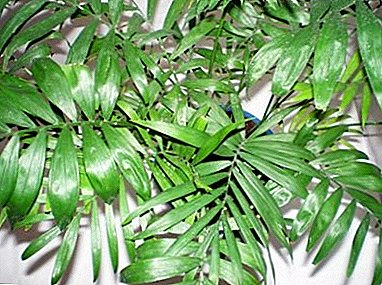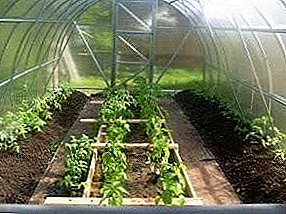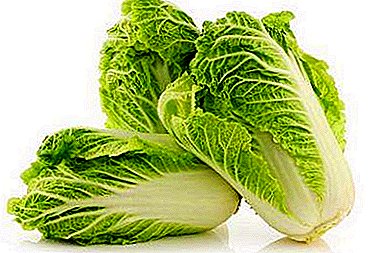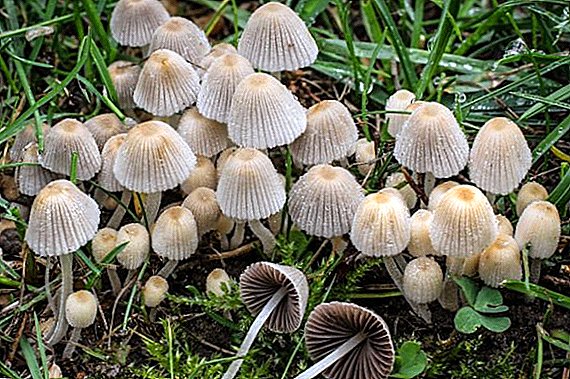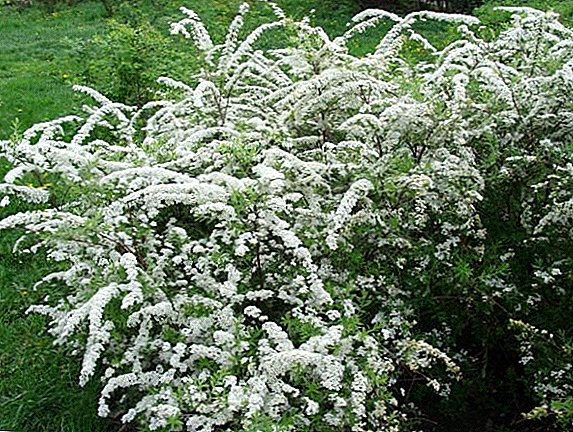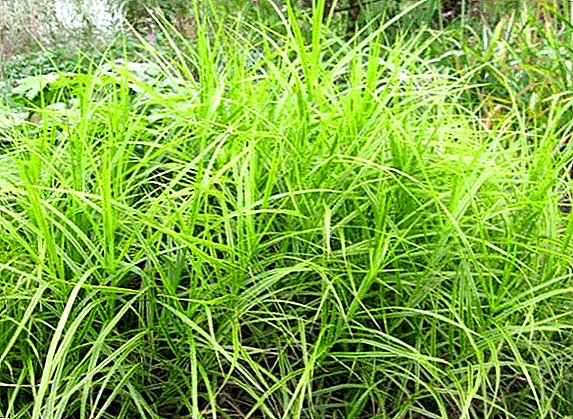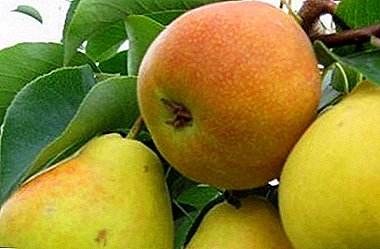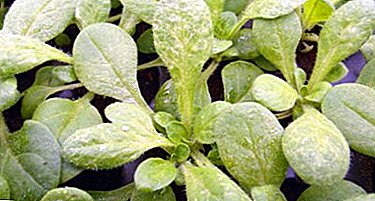
Petunia - one of the favorite plants of flower growers. This flower is one of the bright decorations of any flower garden. Petunia pleases with its flowering from late spring to the very frosts, it is undemanding to care and resistant to negative factors - dust, air pollution, rare irrigation.
For unpretentiousness in the care, a relative of nightshade is used in urban gardening, often planted in pots and pots. Sometimes, even with good care, the leaves of the plant become brighter, it would seem to be unknown why. In this article we will consider the possible causes of petunia leaves whitening and options for eliminating this problem.
Features flower growth
Petunia is characterized by a strong root system.. Slow growth of seedlings in the first month after germination is due to the fact that young seedlings build up the root system. After a month, the seedlings will get stronger and the plants may not get food due to the cramped capacity. The shoots at this point will already grow enough and their growth will be important to regulate.
We offer to watch a video about the growth of petunia:
Why do leaf blades turn pale green?
 Any a change in leaf color indicates a plant’s reaction to a negative factor. This reaction manifests itself in violation of the production of chlorophyll.
Any a change in leaf color indicates a plant’s reaction to a negative factor. This reaction manifests itself in violation of the production of chlorophyll.
For accurate diagnosis, it is close enough to examine the leaf blade. If there are no small microorganisms on it (aphids, spider mites), spider webs and sticky fluids, then the reason for the oppression of plants lies in the care errors.
The most common reason that the leaves of petunia turn white is a lack of macro and microelements. Petunia is very responsive to nutritional deficiencies., especially when container growing method.
What to do?
To return a diseased flower to a healthy appearance, you need to follow these guidelines:
- If the cause of blanching leaf color is fungal disease, diseased leaves are removed from diseased plants. Then they are treated with a systemic fungicide solution.
To combat the complex of fungal diseases (including powdery mildew), such drugs as Fundazol, Previkur, Topaz are excellent.
- Fundazole is an effective drug, but it is difficult to buy in a small package. The recommended dose for preparing a solution is 10 g of powder per 10 liters. water.
- Previkur and Topaz are sold liquid in ampoules and it is more convenient to dilute them. To prepare the solution, it is necessary to dissolve 2 ml in 10 l of water.
Water for processing plants should not be cold and not hot - room temperature (20-22 degrees).
When processing chemicals to protect plants, use personal protective equipment (gloves, goggles, mask) and do not forget about the safety precautions recommended on the product packaging!
Treatments are carried out in dry and windless weather. Children and animals should not be near.
In case of severe injury, repeated treatment with fungicides is required 2-3 weeks after the initial spraying.
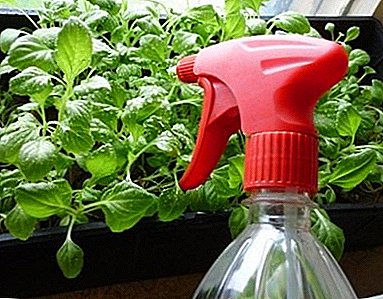 Iron deficiency treated by irrigation with acidified water (1 tsp. citric acid in 10 liters. water). In severely neglected cases, when the plant has many pale-colored leaves, regular fertilizing with ferovit iron chelate solutions is used. To prepare the working solution, dilute 1.5 ml in 2 liters of distilled water at room temperature.
Iron deficiency treated by irrigation with acidified water (1 tsp. citric acid in 10 liters. water). In severely neglected cases, when the plant has many pale-colored leaves, regular fertilizing with ferovit iron chelate solutions is used. To prepare the working solution, dilute 1.5 ml in 2 liters of distilled water at room temperature.Plants are fed by spraying. The multiplicity of treatments - 1 time per week (up to 4 times). At 2-3 weeks of treatment, there should be a positive trend in the recovery of petunia.
- Lack of nitrogen it is filled with foliar top dressings and top dressings under a root. With a significant nitrogen starvation, nitrogen is needed, easily absorbed by the plant. The best option would be a solution of urea (carbamide).
Unlike ammonium nitrate, in urea, nitrogen is contained in a more accessible form. For foliar top dressing, urea is diluted at the rate of: 30-40 g of granulated fertilizer is diluted in 10 liters of water.
Observe the exact dosage of fertilizer preparation. In violation of the concentration of the leaves of petunia can be "burned."
- If the reason for the white color of the sheet is to cramped container, petunias are pulled out and transplanted into a new, larger container.In the new soil for planting flowers, it is advisable to add the well-proven complex and long-playing fertilizer “AVA Universal 1 year”. Application rate: 1/3 tsp on one bush.
- Irrigation violation - the gulf of plants, the soil under the flowers are loosened and dried.
- Petunias suffering from lack of lighttransplanted to sunny areas of the garden.
Preventive measures
To achieve the best result and to avoid these problems, preventive measures should be combined with basic care.

- In order to prevent fungal diseases in stable rainy weather, it is advisable to use the drug Fitosporin.
- To improve air exchange and better access of moisture to the root system, periodic loosening of the topsoil is carried out.
- Seedlings and adults healthy specimens in the period of growth and flowering regularly (every 2 weeks) are fed with appropriate fertilizers. For flower crops, complex fertilizers Kemira Lux and Kristallin have recommended themselves well.
It is not at all difficult to get petunias blooming all summer and pleasing the eye with their bright, so different colors. With the observance of simple rules of care and timely control of diseases, it is possible to achieve flowering “as in the picture” of a magazine on landscape design. Prevention is a great thing, and an experienced gardener knows the golden rule: “Forewarned means armed!”.


 Iron deficiency treated by irrigation with acidified water (1 tsp. citric acid in 10 liters. water). In severely neglected cases, when the plant has many pale-colored leaves, regular fertilizing with ferovit iron chelate solutions is used. To prepare the working solution, dilute 1.5 ml in 2 liters of distilled water at room temperature.
Iron deficiency treated by irrigation with acidified water (1 tsp. citric acid in 10 liters. water). In severely neglected cases, when the plant has many pale-colored leaves, regular fertilizing with ferovit iron chelate solutions is used. To prepare the working solution, dilute 1.5 ml in 2 liters of distilled water at room temperature.
